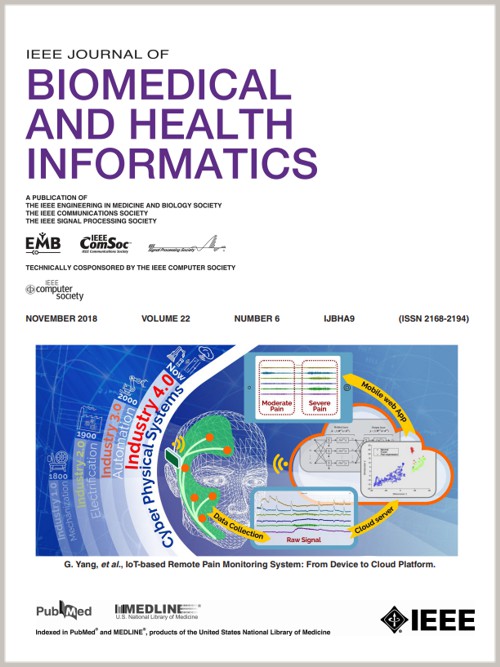A General DNA-Like Hybrid Symbiosis Framework: An EEG Cognitive Recognition Method
IF 6.7
2区 医学
Q1 COMPUTER SCIENCE, INFORMATION SYSTEMS
IEEE Journal of Biomedical and Health Informatics
Pub Date : 2024-08-09
DOI:10.1109/JBHI.2024.3441332
引用次数: 0
Abstract
In electroencephalogram (EEG) cognitive recognition research, the combined use of artificial neural networks (ANNs) and spiking neural networks (SNNs) plays an important role to realize different categories of recognition tasks. However, most of the existing studies focus on the unidirectional interaction between an ANN and a SNN, which may be overly dependent on the performance of ANNs or SNNs. Inspired by the symbiosis phenomenon in nature, in this study, we propose a general DNA-like Hybrid Symbiosis (DNA-HS) framework, which enables mutual learning between the ANN and the SNN generated by this ANN through parametric genetic algorithm and bidirectional interaction mechanism to enhance the optimization ability of the model parameters, resulting in a significant improvement of the performance of the DNA-HS framework in all aspects. By comparing with seven typical EEG cognitive recognition models, the performance of the seven hybrid network frameworks constructed using this method on different EEG-based cognitive recognition tasks are all improved to different degrees, verifying the effectiveness of the proposed method. This unified hybrid network framework similar to the DNA structure is expected to open up a new approach and form a new research paradigm for EEG-based cognitive recognition task.类似 DNA 的通用混合共生框架:脑电图认知识别方法。
在脑电图(EEG)认知识别研究中,结合使用人工神经网络(ANN)和尖峰神经网络(SNN)在实现不同类别的识别任务中发挥着重要作用。然而,现有的研究大多集中于人工神经网络和尖峰神经网络之间的单向交互,这可能会过度依赖于人工神经网络或尖峰神经网络的性能。受自然界中共生现象的启发,本研究提出了一种通用的类 DNA 混合共生(DNA-HS)框架,通过参数遗传算法和双向交互机制,实现 ANN 与该 ANN 生成的 SNN 之间的相互学习,增强模型参数的优化能力,从而显著提高 DNA-HS 框架的各方面性能。通过与七个典型的脑电认知识别模型比较,利用该方法构建的七个混合网络框架在基于脑电的不同认知识别任务上的性能均有不同程度的提高,验证了所提方法的有效性。这种类似于DNA结构的统一混合网络框架有望为基于脑电图的认知识别任务开辟一种新的研究方法,形成一种新的研究范式。
本文章由计算机程序翻译,如有差异,请以英文原文为准。
求助全文
约1分钟内获得全文
求助全文
来源期刊

IEEE Journal of Biomedical and Health Informatics
COMPUTER SCIENCE, INFORMATION SYSTEMS-COMPUTER SCIENCE, INTERDISCIPLINARY APPLICATIONS
CiteScore
13.60
自引率
6.50%
发文量
1151
期刊介绍:
IEEE Journal of Biomedical and Health Informatics publishes original papers presenting recent advances where information and communication technologies intersect with health, healthcare, life sciences, and biomedicine. Topics include acquisition, transmission, storage, retrieval, management, and analysis of biomedical and health information. The journal covers applications of information technologies in healthcare, patient monitoring, preventive care, early disease diagnosis, therapy discovery, and personalized treatment protocols. It explores electronic medical and health records, clinical information systems, decision support systems, medical and biological imaging informatics, wearable systems, body area/sensor networks, and more. Integration-related topics like interoperability, evidence-based medicine, and secure patient data are also addressed.
 求助内容:
求助内容: 应助结果提醒方式:
应助结果提醒方式:


